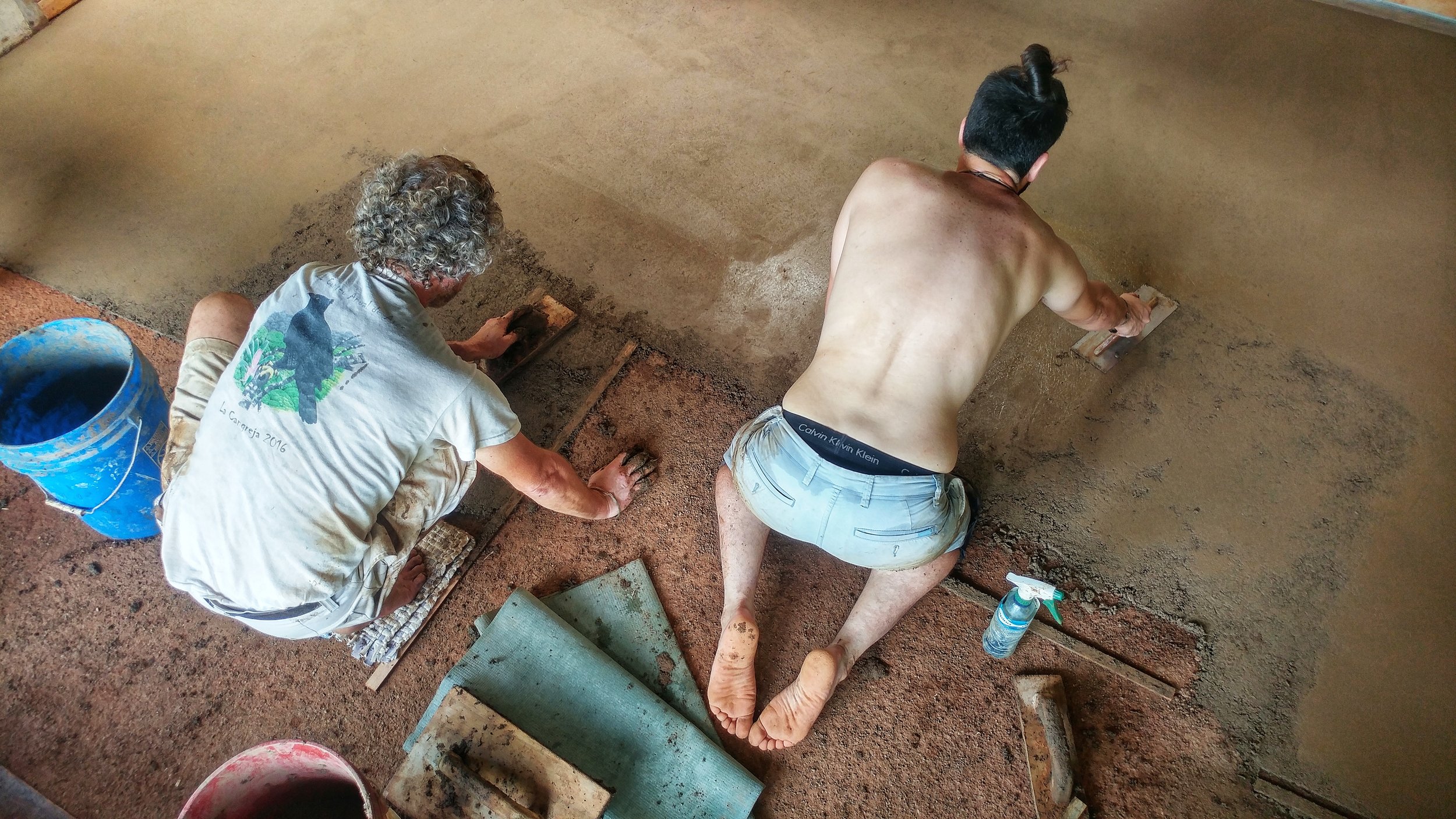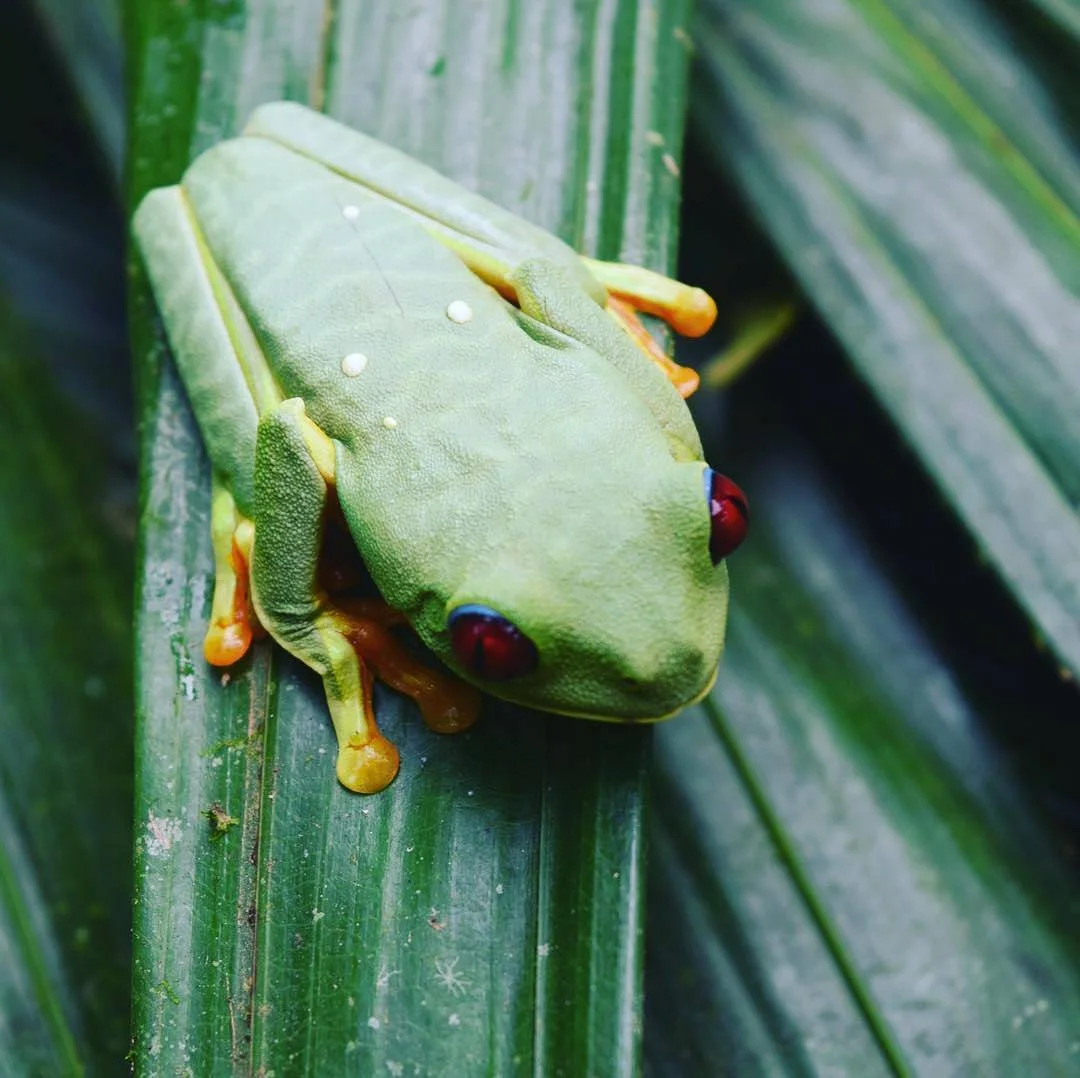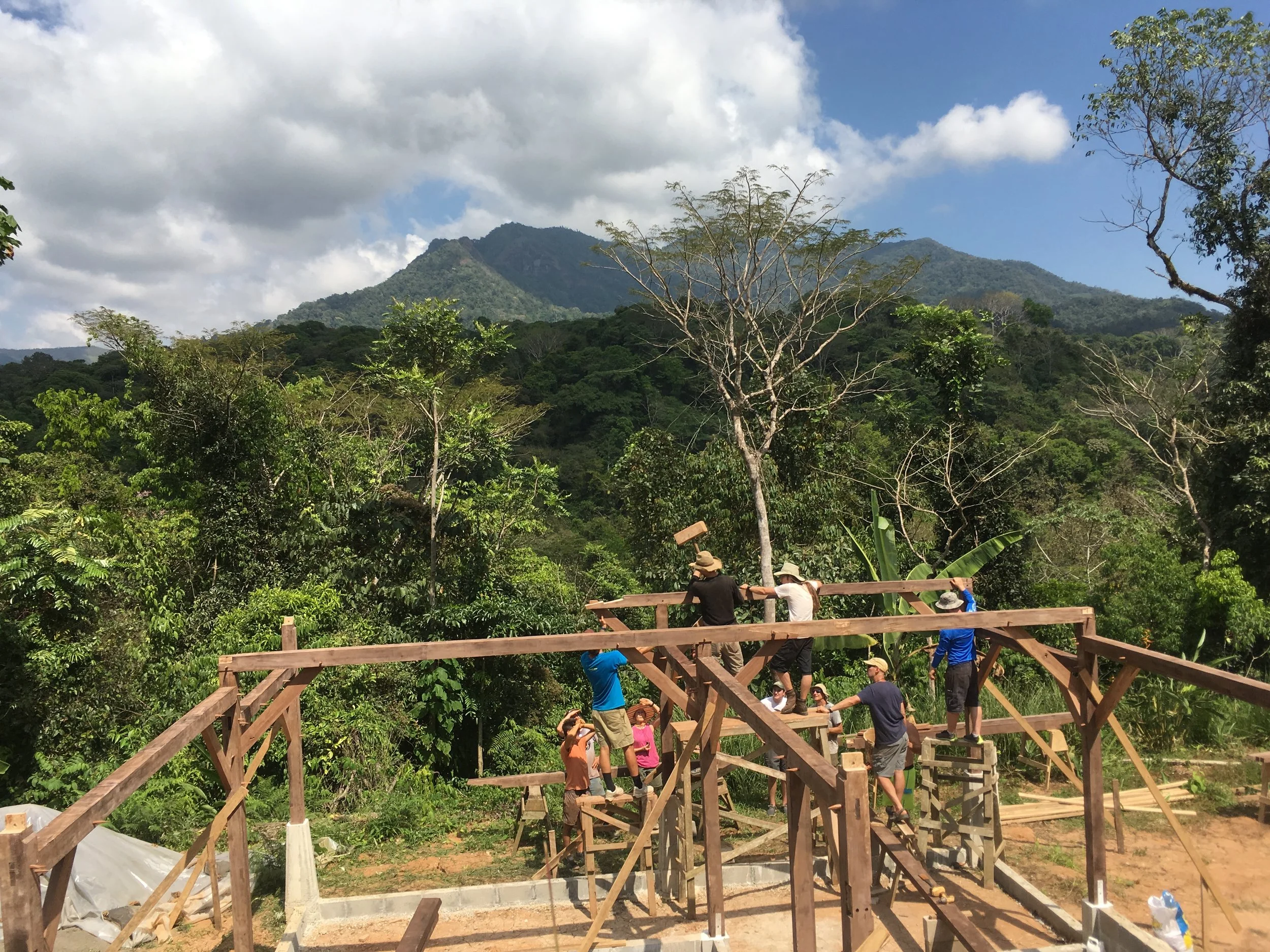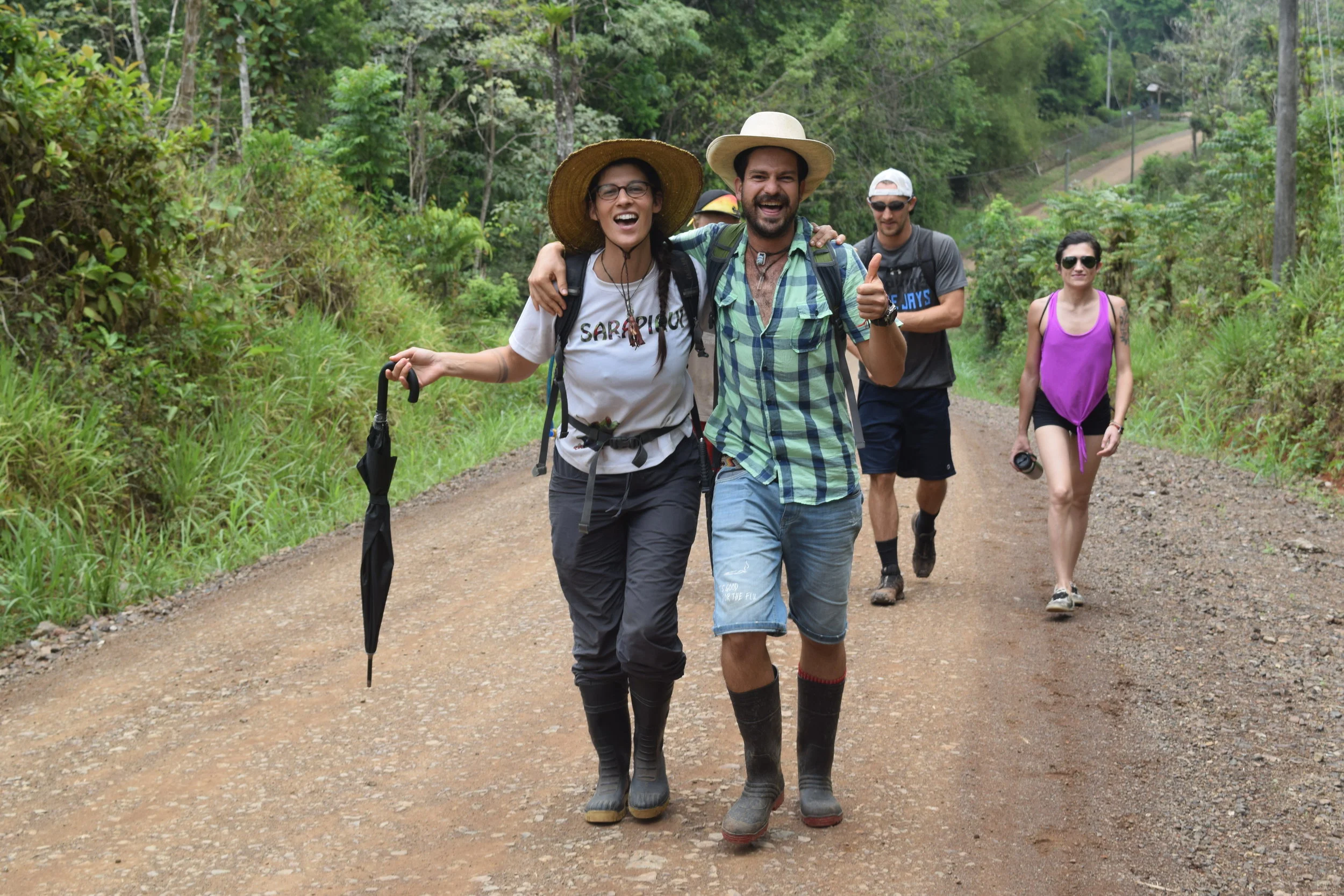Earthen floors add a great earthy touch to your sustainable home; whether that’s in your cob house or conventional stick frame home. They have more give than concrete or tile, meaning they are more comfortable and easy on your feet.
Ranch Reading Recommendations: 8 Great Books I Read This Fall That Relate To Our Work
During my annual visits to see family in the United States, I oftentimes have the opportunity to catch up on some reading that regularly alludes me during the busy seasons here in Mastatal. More than any year in recent memory, I felt as if I hit the jackpot with the titles that I was recommended, came across, and picked up this fall.
The Basic Pantry Analysis: Design, Food, Sourcing
Cuisine is diet that's unique to a physical place and a human cultural group. We can taste the patterns of modern cuisine in the melding of characteristic ingredients into characteristic forms. Wheat noodles with tomato sauce points us in the direction of Italy. Fermented spiced cabbage leads us to Korean kimchi.
Flexitarianism: Living and Sharing Solutions to Climate Change
DISCLAIMER: These are my thoughts and experiences on what can be a deeply cultural, charged and personal topic: diet. There is a lot we don’t know, especially when it comes to what a sustainable diet is. For one, most studies have been centred in high-income Western countries (Jones et al., 2016); it’s also still largely unclear exactly what a “healthy diet” should consist of, nevertheless what a truly sustainable society would look like. Integrating all of these concepts is an enormous challenge.
Contemplating an Uncertain Future: The Ranch and Climate Change
Climate change, after decades of lulling at the bottom of the news cycle, has belatedly made it into the headlines as increasing numbers of people become aware, convinced and concerned about the environmental and social impacts of the Earth’s evolving atmospheric conditions. I frequently think about disrupted weather patterns and what my role in this unfolding story should be.
How Mentorship will Help our Permaculture Community Grow
Mentorship may be one of the biggest opportunities for growth in our fledgling permaculture movement. There is interest in professional careers as permaculture designers, but the field lacks quality mentoring opportunities. By these I mean mentoring in a specific field, by a professional who has years of experience, with the goal of developing a specific skill set and livelihood.
Where to Buy Your Trees and Seeds in Costa Rica?
Ever have a challenging time finding your favorite plant in Costa Rica? Or wonder where to get supplies for a new greenhouse? What about organic pesticides? After nearly a decade working in country, our team has compiled a comprehensive list of nurseries, seed banks, botanical gardens, and farm/garden suppliers.
Permaculture Education: Virtual Reality and Keeping it Real
Nearly a decade ago I moved to where I live now-- a tiny, isolated, town in rural Latin America. Its charms include lush towers of tropical rain forest, rainbows of succulent fruits, and a nightly chorus of a thousand frogs. A single disheveled bus leaves in the morning and returns at night, except on Sundays, or when the road washes out. The place is home to farmers, families, and a spattering of eclectic foreigners. The town's namesake, the Mastate, is a tree that bears a thick white sap which people sometimes drink in coffee, like milk.
Salak Palm: A Guide for Tropical Permaculture
This article was originally published at the Porvenir Design blog.
Salak palm or snake fruit (Salacca edulis or Salacca zalacca) is a high value understory species for tropical agroforestry plantings. Salak palm is native to southeast Asia, where it is commercially cultivated in Indonesia, Malaysia, and Java, in their wet tropical lowland climates. At higher elevations the "Bali" variety can be grown. It produces a delicious fruit, eaten out of hand, with a taste similar to strawberry with an apple-like texture. The fruit transports well and can be stored at room temperature for a week with little degradation in quality.
How to Make a Real Tortilla
When I was a teenager, I traveled for a few months with a Mexican shoe-shiner I met in Mazatlán. We thumbed rides across the country and were taken in along the way by a dozen or so of his relatives. I often found myself in the kitchen with his aunts, cousins, and nieces, making tamales, sopes, or other dishes that were new to me.
8 Tips for Starting your Tropical Homestead
You’ve just purchased your dream property in tropical Costa Rica. You want to grow your own food. You are anxious to get to work now, have bought some plants from a nursery you randomly drove by, and have a shovel in hand, but...where to start?
Most of our clients fall on either side of a spectrum of project implementation. Either they experience paralysis by analysis, overthinking every step, their confidence slowly eroding, or they dive in head first without any planning. Either way they hire our team at Porvenir Design to bring them to the middle. How can we take our time and plan while simultaneously moving forward with the energy and confidence that is required to see a project to completion?
Timber Framing in the Tropics
The rainforests of Central America might not be the first place that you think of when you hear the term “timber frame construction”, but with initiatives in Monteverde and Mastatal, Costa Rica is starting to make a name for itself in the region for this post and beam building technique. We started to build the infrastructure of Rancho Mastatal Sustainability Education Center in the small rural community of Mastatal, Costa Rica in 2001.
5 "Grow-Your-Own" Mulch Plants for the Tropics
This post was originally published by the ECHO Community newsletter and was reposted from the Porvenir Design blog.
The tropical forest is constantly self-mulching. After a walk in the woods I usually return with bits of leaves and twigs caught in my hair. Lying in bed at night, my partner and I often hear branches and even whole trees tumbling toward the great soil food web below.
Rancho Mastatal Voices
Our Natural Building World
In the natural building world at Rancho Mastatal there is no lack of projects to be done. I think as a team we have collected a list that will take us past 2020. And we already have been building our infrastructure for the past 16 years. One could say we are natural building addicts!
Orienting Oneself to Mastatal
If you’re anything like me, then you will find Rancho Mastatal to be a place of incredible beauty, endless inspiration, and powerful community. Even if we have very little in common, you will certainly find it to be unique. Among ecovillages and permaculture communities, over the years Rancho Mastatal has developed a reputation for its intricate systems, well organized educational programs, and gorgeous natural buildings that sprinkle the 300 + acre Ranch.
Getting Inspired About Natural Building
Over the years of natural building at Rancho Mastatal my feelings on the process have gone through many stages. From the initial excitement of- wow, how cool you can build a house from the materials on your land, and all it takes is time, practice, and anyone can do this! To over time, after building many walls, an understanding of how long it takes to build a natural home and all the work that it entails.
Meet our 2017 Apprentices!
Invisible Infrastructure: How We Build Our Lives Together
Developing the physical infrastructure of our campus gets me up every morning. I don't need coffee nor an alarm clock; I'm just excited to keep building. Building the orchards and earthworks, furniture for my home, a better feeder for our chickens; these are the projects that rev my permaculture engine. They are concrete, you can see the results of your physical labor immediately, and they are often the first projects of burgeoning permaculture sites. It requires little effort to dedicate the time, space, resources and money to these projects. Yet their impact on the success of a project, despite all this dedication, pales in comparison to another type of infrastructure; the invisible infrastructure.
Top Ten Tips for the New Apprentices
"Everyone is looking at my feet," I say to my dad.
"No they're not," he scoffs back. Sure enough, he glances sideways at a group of teenage girls eying my dirty toes clad in Chacos.
We are not in the jungle any more. It's December in New York City, I am traveling on the subway with a large backpack, and five layers of sweatshirts, never having worn more than one at a time in the tropics. Fresh off the airplane, here I am with my exposed feet and disheveled appearance-- "Is she homeless?" the girls snicker.





















